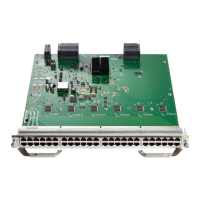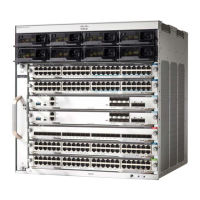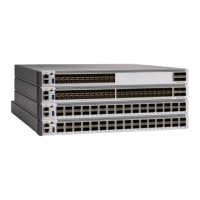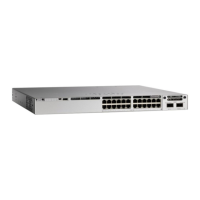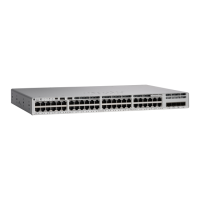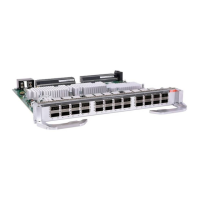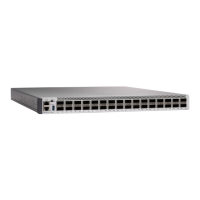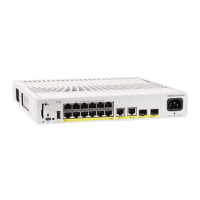Interactions with Other Features
High Availability
This section explains considerations that apply to a High Availability configuration, when running a software
version that supports Smart Licensing Using Policy. The following High Availability set-ups are within the
scope of this document:
A device stack with an active, a standby and one or more members
A dual-RP (route processor) set-up, where two RPs are installed in a chassis, one being the active and the
other, the standby.
A dual-chassis set-up
6
(could be fixed or modular), with the active in one chassis and a standby in the other
chassis.
A dual-chassis and dual-RP set-up
7
, on a modular chassis. Two chassis are involved here as well, with an
active RP in one chassis, a standby RP in the other chassis. The dual-RP aspect refers to an additional in-chassis
standby RP in just one of the chassis, which is the minimum requirement, or an in-chassis standby RP in each
chassis.
Trust Code Requirements in a High Availability Set-Up
The number of trust codes required depends on the number of UDIs. The active product instance can submit
requests for all devices in the High Availability set-up and install all the trust codes that are returned in an
ACK.
Policy Requirements in a High Availability Set-Up
There are no policy requirements that apply exclusively to a High Availability set-up. As in the case of a
standalone product instance, only one policy exists in a High Availability set-up as well, and this is on the
active. The policy on the active applies to the standby or members in the set-up.
Product Instance
Functions
in a High Availability Set-Up
This section explains general product instance functions in a High Availability set-up, as well as what the
product instance does when a new standby or member is added to an existing High Available set-up.
For authorization and trust codes: The active product instance can request (if required) and install authorization
codes and trust codes for standbys and members.
For policies: The active product instance synchronizes with the standby.
For reporting: Only the active product instance reports usage. The active reports usage information for all
devices (standbys or members – as applicable) in the High Availability set-up.
In addition to scheduled reporting, the following events trigger reporting:
• The addition or removal of a standby. The RUM report includes information about the standby that was
added or removed.
• The addition or removal of a member, including stack merge and stack split events. The RUM report
includes information about member that was added or removed.
6
The Cisco StackWise Virtual feature, which is available on Cisco Catalyst switches, is an example of such a set-up.
7
The Quad-Supervisor with Route Processor Redundancy, which is available on Cisco Catalyst switches, is an example of such a set-up.
System Management Configuration Guide, Cisco IOS XE Bengaluru 17.4.x (Catalyst 9400 Switches)
104
Smart Licensing Using Policy
Interactions with Other Features
